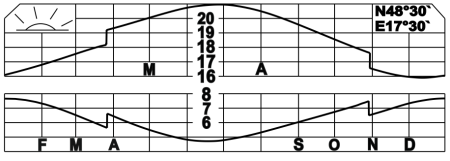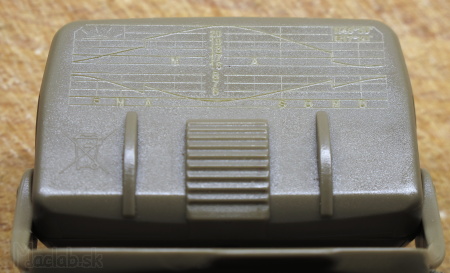Upgrade headlamp Petzl Tikka XP a Tactikka XP
LED replacing
I decided to upgrade my favorite Petzl XP headlamp. I changed the old Luxeon for a new LED that shines with a slightly brighter and slimmer light. Take a few extras in order to increase the useful value of the headlamp. With a little skill, it's everyone.

Original headlamp Petzl XP

Unscrew 3 screws under the batteries and remove the inside.

Let's remove the lens from the ice.

Heat conductive paste and overheating sensor.

We need to select the new pad to fit the optics, otherwise the light cone will be focused. We remove the old and we attach new ones. Beware of polarity.

Before we assemble the preist, we will test whether the new ice is really shining and everything is okay.
Tritium beta light
The triple light shines continuously for several years. It's great to mark the headlamp so I do not have to scratch the dark. There is not enough space in the front, but I finally screwed it up

As shown in the figure, we drill a diameter of 2mm. Here I measure twice ... even though I've been thinking about 5 times to get it right.

Insert the tricycle ampoule into the opening. The storage is overlapped and, moreover, it is supported by a bolt pillar. We all sing it and seal off with a second glue.

On the other side, the triple ampoule can be seen in the opening for insertion of the scatter. Thrill light is visible even if it is covered by a scatter. Beware, the green light can not be seen under the red scatter. The white triple light is also visible under the red scatter. I use only a transparent scatter.

Headlamp in dar room.
Laser engraving

Plan: západ-slnka.cdr

From the backside of the headlamp there is a graph from which you can learn: the sunrise / sunset time, the day / night length, the longest day / night of the year, the change of time to summer / winter. Applies to Western Slovakia and its surroundings. Turning east, the sun rises and fades a few minutes earlier.
Replacing the headband
I've been using the headpiece for about 10 years and the strap has lost its elastic properties so long that the headlamp has already dropped my head. The original PETZL spare strap can be picked up, but needs to be ordered, and its shipping cost is about half that of the new headlamp.

The original PETZL strap is finished off the ridge.
So I decided to make my own strap. In the haberdashery you can get an elastic strap that matches the required width of 25mm. The salesperson needs to ask "Rubber it Trenok". This "rubber" is, however, strong enough to hold the head. It has an excellent price of 40 cents per meter. We will need a length of about 60cm.

The spare strap must have a width of 25mm and a length of at least 60cm.
The advantage of the original replacement strap is to end with a "ridge" that allows the strap to be pulled out of the head without the strap being cut or mowed. This is useful if we need to clean the strap after a while. But the pulling of the strap takes some time, so I did it better by pulling the head off the swivel joints and separating it from the strap.

We will slide the new strap through the plastic buckle. We will temporarily secure the connections with a pin. Instead of completing with a comb, we strap the straps to the strap permanently.

By sliding the laces, we can adjust the strap size. This would compensate for the progressive elasticity of the strap. The team will extend the life of the headlamp for a few more years.
Long-term testing and review of PETZL XP
With a 10-year distance, I can evaluate the properties of the headlamp. The main advantages include the ability to use a scatter for near or remote lighting. As I move around the camp, I have a scattered flap and I will light up that wide area. When I scratch the scatter, I get a narrow light cone, which I use especially when lighting up in the distance or when riding a bicycle. I can adjust the ratio of light to close and distant by position of scattering. In addition, the scatter protects the optic against scratches. The headrest also includes a boost button that allows instant switching to maximum light output. This is useful when you need to look for a lost mark or path, for example. The whole body is robust and mechanically durable, and the battery cover is supplemented with a rubber seal.
Among the drawbacks, I could include lighting modes. The headlamp switches from the strongest lighting mode to the weaker one. It would be better for me to start from the smallest. By pushing the boost button, you can switch to maximum power at any time even from the off state. Another drawback is the absence of red light. Although the headpiece also contains a scatter of red color, it must be replaced at the expense of the white. When we lower the scatter, we get a wide cone of red light and a narrow cone of white light when narrowly tilted. Replacing the white striker over the red requires the head assembly to be off the head, which is impractical. The truth, however, is that I really needed red light only a few times when I was staring at the stars. Under normal circumstances, I do this by blurring the white light over my thumb so that I get the red colored light to wake up other nightclubs.
Despite the small disadvantages I am satisfied with the PETZL XP. The reason why I did not go to a new model is that the headlamps in the current collection (2018) do not have a boost button, they do not have a scattering that protects the optics and they do not even have a sealed battery space. In addition, the new headlamps are no longer assembled but glued, so any upgrade or repair would be quite complicated.